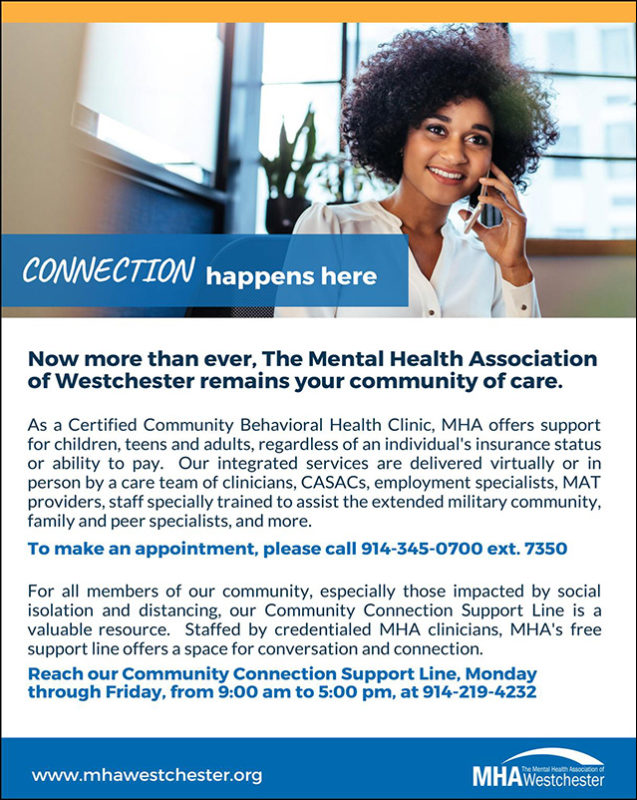Suicide is often considered to be the most preventable cause of death. Yet, recent years have seen steadily rising numbers of loss to suicide in the United States. This rise has occurred despite the cultural shift that has allowed the fact of suicide to come “out of the closet;” despite the cultural shift that recognizes that thoughts of suicide are not rare; despite the cultural shift that encourages individuals to talk about these thoughts; despite the cultural shift that encourages individuals to seek the support and assistance that is best for their individual needs and preferences; and despite the cultural shift that recognizes that hospitalization is not necessarily the most helpful intervention. The concept of “deaths of despair” – deaths ultimately due to suicide, drug overdose and alcoholism – but driven by social and economic forces that render life so challenging for so many – has become part of our lexicon. We understand so much about risk factors at the individual and societal level. Our clinical and peer support skills have improved. We are more skilled at identifying and intervening with emerging crises. So why do we continue to lose loved ones at an increasing rate, and most importantly, what can we do to reverse this painful reality?

Michael Orth, MSW
Commissioner
Westchester County DCMH

Barbara Bernstein, PhD, MPH
Chief Planning Officer
MHA of Westchester
To address this community problem, Westchester County recently launched a Suicide Fatality Review Team (SFRT). The SFRT is a public health approach that analyzes local data to identify risks specific to Westchester County in order to develop specific county-level prevention and intervention approaches. Westchester is one of four sites selected by the New York State Office of Mental Health to adapt this effective model which was developed in Washington County, Oregon. In Westchester, the Review Team is convened under the auspices of the Westchester Suicide Prevention Task Force. The SFRT is comprised of the Medical Examiner, the writers of this article who Co-Chair the Task Force, and additional representatives of Westchester DCMH, DOH, DSS, first responders, schools, the VA, and community organizations.
The mandate of the Review Team is to, with family consent, review previously collected information about the individual who has died by suicide in order to identify commonalities about the circumstances of these deaths. The Oregon model creates a mechanism to bring together information that previously existed only in silo-ed systems. This information may come from, for example, the Medical Examiner, law enforcement, medical or other systems. The information is reviewed not to assign blame but to identify systems-level interventions that may prevent future similar deaths.
Analyzing aggregated information, our goal in Westchester is to identify specific risk and protective factors to develop targeted prevention and intervention strategies. For example, as the Oregon program accumulated information, they identified that on several occasions, household pets were brought to local shelters prior to an individual’s death by suicide. This realization led to “gatekeeper” level suicide risk-awareness training for shelter workers and creation of a mechanism to connect people at imminent risk to effective supports and services. Similarly, training of staff at a motel which had been the site of several suicide deaths enabled staff to recognize individuals at imminent risk and to save lives. Thus, they trained the people who were among those who were the last to see the deceased, expanding the traditional training focus from traditional caregivers such as mental health and medical professionals and clergy. Using this model, preliminary data indicate that between 2012 and 2018, Washington County, Oregon reduced the occurrence of suicide death by 40 percent.
A 40% reduction in lives lost stands alone as a herculean accomplishment. When we consider the ripple effects of each individual’s death on their family, closest friends and communities, the magnitude of that effect is so much greater. Recent research suggests that for each death by suicide 135 people are affected (suicidology.org/facts-and-statistics/).
Through the Suicide Prevention Task Force, we have established an informal ‘advisory’ group comprised of individuals who have lost a loved one to suicide – our group includes parents, parents-in-law, grandparents, spouses, and siblings. It is their stories, their experiences that bring faces and a 3-dimensionality to the data and to our work. While the work of the SFRT focuses on data and trends, we are driven by the personal, underlying stories and experiences.
The public health approach of identifying problems and trends in order to develop, implement and test prevention and intervention strategies is one component of an effective suicide prevention plan. In addition, work continues at the individual clinical level. For example, services delivered by MHA of Westchester incorporate a continuum of suicide prevention and intervention strategies. Clients complete a suicide screening at the time of intake and again whenever indicated, either because of particular clinical content or due to circumstances – such as transition from a hospital stay. When a screening is positive for suicidal thinking or planning, a more complete assessment, which then informs the course of treatment and support, is done. This includes creation of a safety plan which identifies the individual’s “triggers” and warning signs, as well as an individualized toolkit of responses, ranging from drawing on internal resources to informal supports to formal supports and services. Our clinic services utilize a risk stratification approach which helps us identify individuals for whom additional attention is required. Peer support services are an integral part of our work. In collaboration with Westchester DCMH, our Enhanced Peer Services assist with transitions from hospitalizations. Beginning by establishing connection prior to discharge, our peers assist with tangible needs such as transportation, obtaining medication and needed supplies, food, and most importantly, relationship with others. Utilizing their own lived experience of mental health challenges and recovery, our Peer Specialists are particularly helpful at these times.
Staff training is an essential component of our work. Staff who have direct contact with clients complete training in administering the Columbia-Suicide Severity Rating Scale (C-SSRS) screening tool, and the Stanley-Brown Safety Plan, as well as either safeTALK or ASIST training, which is also open to all other staff. Our Peer Support training program, which prepares individuals to complete OMH Certification, includes suicide awareness and intervention training. We continue to incorporate additional suicide-specific treatment tools into our training and workflows. We are expanding our joint training with agencies that serve those impacted by family violence. Community education has been a high priority for us, as evidenced by our ongoing Community Conversation series that has addressed multiple aspects of suicide and its impact on families and the community; by our delivering safeTALK and ASIST for the general community as well as by delivering site-specific training at businesses, in school communities and at other sites. Providing community education on this sensitive topic is challenging during the COVID-19 restrictions. However, as the need for these conversations and training continues, we are exploring ways to safely deliver suicide awareness and prevention training through virtual platforms.
September is Suicide Prevention Month. This year especially, as our communities experience an increase in multiple stressors associated with heightened risk of mental health challenges, substance use and risk of suicide, it is fitting that our SFRT will hold its first formal review. We are optimistic that, as in Oregon, our work will achieve a significant reduction in lives lost to suicide.
Barbara Bernstein, PhD, MPH, is Chief Planning Officer at MHA of Westchester and Michael Orth, MSW, is Commissioner of the Westchester County, NY, Department of Community Mental Health.








This raises questions and evokes concerns as well. This gatekeeper suicide risk awareness training for folks that are the last to see the deceased. I’d imagine these are nonclinical bystanders, or staff members are these motels described. Are they open to be apart of these trainings? How do they get pulled into this larger conversation. Also, if they aren’t clinicians isn’t this sort of arming the community with interventions potentially harmful if they aren’t savvy enough to know how to intervene. This isn’t exactly police academy citizens on patrol. Youre talking about interventions that take years of training to know to how execute without doing more harm than good. I truly wonder about the potential mishaps. How do you oversee and regulate this? Oversight with people who are not licensed…